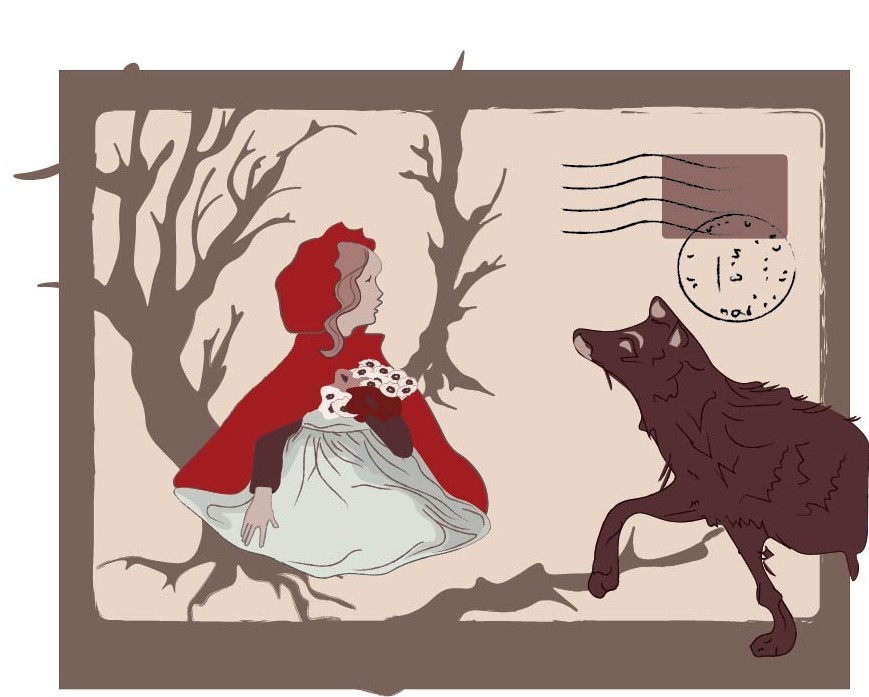Challenging the way fairy tales are depicted in Walt Disney’s popular animated films, the Weisman Art Museum’s new exhibit, “The Wonderful World Before Disney,” gives viewers a unique look into the power of storytelling.
The exhibition, which opened Jan. 12, features a selection of whimsical postcards from the late 1890s through the early 1930s.
The postcards were donated by Jack Zipes, a University of Minnesota emeritus professor of German and comparative literature. The exhibition is organized into six sections — one for each of the most popular fairy tales in Europe and North America.
Zipes, who has studied folklore and fairy tales for more than 40 years, was fascinated by the communicative medium of the postcard. He owns well over 3,000 fairy-tale postcards, having spent years scouring flea markets, garage sales, eBay profiles, attics and auctions for more to add to his collection.
Although he has donated nearly all his postcards to museums, he’s still on the hunt for more unique and exciting finds.
“What is fascinating in the production of fairy-tale postcards is that they present a new ‘optique’ or perspective about the stories,” Zipes said. “They demand that we visually review the different ways a fairy tale can be represented through art, whether it be an oil painting, a water color, a photograph, an ink drawing, a silhouette and so on.”
Although the plots of some of these fairy tales may appear outdated (because, really, who leaves a trail of breadcrumbs anymore?) the act of storytelling certainly isn’t.
“Storytelling is a way to create alternative narratives to our present reality, a way to question our everyday life,” said May Abnet, a former intern at WAM who worked on the design and layout of the exhibit, in an email.
“The beauty of fairy tales is that, due to their oral origins, they can’t be frozen into text, and continue to evolve through the diversity of medium chosen to tell them, over and over.”
Anatoly Liberman, a professor who teaches linguistics and folklore at the University, said he admires the way fairy tales continue to saturate everyday life, often without consciously thinking about them.
“Fairy tales and tales of all kinds — pictorial or verbal, it doesn’t matter — I think they remain a part of our life forever,” Liberman said. “The fairy tale permeates our lives in so many ways. They’re reflected so strongly in art, in music, in opera, in ballet. Even if not directly, there is always the triangle: the princess, the hero and the villain. That is the paradigm of life.”
Diane Mullin, a senior curator for WAM, is fascinated by the way the themes in fairy tales are evolving to reflect the social and political backdrop of today.
Although fairy tales were originally told to inform, provide solace and offer moral instruction to those who heard them, Mullin said the exhibit is interesting because some darker themes that permeate fairy tales (like hunger, rape, child neglect and abandonment) are still pressing problems today.
“It is interesting — these notions of a supine, comatose woman getting kissed and waking up is just part of the tale of ‘Sleeping Beauty,’” she said. “And I think what it tells us is that we look at the morals and ethos of another time and another place, and we’re like, ‘Hmm, maybe we have to think more about this.’”
Zipes said fairy-tale stories are, and will continue to be, relevant to modern audiences because their themes are still relatable.
“Essentially, if we dig deep and we really analyze all of these classical fairy tales, they really continue to stay with us because we haven’t resolved a lot of the existential problems that prevent us from living harmoniously together,” he said.
“I think that these tales will continue to be told until we continue to resolve these problems,” Zipes said.








